FRASER CONNECTIONS FRASER PLACES AND HISTORICAL EVENTS
For your interest we have compiled a number of places of interest for Frasers and members of the septs to visit, with a Fraser Connection. Some are obvious and others less so. Again I would like to thank Historic Scotland and the National Trust for Scotland for their help, they’ve been of great assistance in compiling the information for this series. If a castle, battlefield etc I mention, is run by one of these organisations simply go to their website at http://www.nts.org.uk or http://www.historic-scotland.gov.uk. Hopefully we will be able to add more as time goes on, so if there’s any place you feel I’ve missed, please let me know email. Hope you enjoy the feature. Editor
ABERDEEN
One of the world’s most northerly and beautiful cities, once the leader of Scotland’s fishing industry, it is now the European oil capital, a very cosmopolitan city. Auld Aiberdeen is very historical with its ancient University and Cathedral, founded by St Machar, a disciple of St 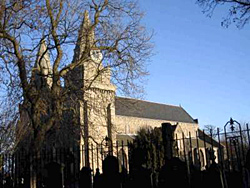 Columba, it isn’t now, strictly, a Cathedral, as it is Presbyterian Church of Scotland but the city boasts 2 others, one Roman Catholic and one Episcopalian, where there’s a memorial to the consecration of Dr Seabury the first US Bishop, the ceremony took place in a room in the house of Bishop Skinner in Aberdeen, conducted by Primus Kilgour, Bishop Petrie and Bishop John Skinner. It’s also a modern city with a large shopping centre and for the tourist there are miles of golden beaches, numerous golf courses, you can even take a tour of the home of Aberdeen Football Club, the Dons are the only British team to win the European Cup Winners Cup and the European Super Cup and don’t forget to try the local delicacy, Rowies.
Columba, it isn’t now, strictly, a Cathedral, as it is Presbyterian Church of Scotland but the city boasts 2 others, one Roman Catholic and one Episcopalian, where there’s a memorial to the consecration of Dr Seabury the first US Bishop, the ceremony took place in a room in the house of Bishop Skinner in Aberdeen, conducted by Primus Kilgour, Bishop Petrie and Bishop John Skinner. It’s also a modern city with a large shopping centre and for the tourist there are miles of golden beaches, numerous golf courses, you can even take a tour of the home of Aberdeen Football Club, the Dons are the only British team to win the European Cup Winners Cup and the European Super Cup and don’t forget to try the local delicacy, Rowies.
Famous Frasers include, Sir Alexander Fraser of Durris, personal physician to Charles II was educated in the city, William Fraser, a Lord Provost and Lord-Lieutenant, the city’s first socialist Lord Provost, Duncan Fraser CBE, George  Fraser local author and moderniser of the city’s libraries and of course, The Fox, Lord Lovat from the ’45 but the one who has left an everlasting mark on the city is Archibald Simpson, 1790-1847, architect and designer of many of the city’s finest buildings, image is interior of his famous Music Hall, thanks to “Aberdeen Performing Arts”.
Fraser local author and moderniser of the city’s libraries and of course, The Fox, Lord Lovat from the ’45 but the one who has left an everlasting mark on the city is Archibald Simpson, 1790-1847, architect and designer of many of the city’s finest buildings, image is interior of his famous Music Hall, thanks to “Aberdeen Performing Arts”.
The Estate of Powis in “Auld Aiberdeen,” was owned by the 
Frasers, their crest is shown on the famous Towers of Powis, until the marriage of an heiress to a Leslie. Powis House was built by Hugh Fraser Leslie and the Towers, which are now part of Aberdeen University, by his son John. Archibald Simpson, was the architect.
Other famous people with an “Aiberdeen” connection are, Lord Byron who was educated at one of the country’s oldest schools, as was Archibald Simpson, Aberdeen Grammar, Thomas Blake Glover 1839-1911, known as the Scottish Samurai, he was brought up in the city and was hailed as the father of the Japanese Industrial Revolution, also, Annie Lennox, the singer, who has Fraser ancestry and Dennis Law, one of Scotland’s greatest footballers, were born and brought up here. For beautiful views of the city go to the City Council’s web cam http://www.aberdeencity.gov.uk/acc/YourCity/webcam/
ABERDEEN, GORDON HIGHLANDER’S MUSEUM
There has always been a strong Fraser connection with the Gordon Highlanders and many Frasers have served in it, for example, when the 100th Regiment (later the 92nd Regiment) was raised in 1794, the Muster Roll shows fifteen Frasers, almost exclusively from 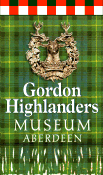 Inverness-shire, with just as many Gordons included. Thereafter, we have nearly 30 Frasers in the Medal Roll for the Boer War, all in the ranks; around a dozen in the Indian General Service Roll for 1895-1902; only five for the Egypt/Sudan conflict 1882-89; seven for Afghanistan 1879-80; seven for the Indian Mutiny 1857-59; sixteen on the Waterloo Roll, 1815; and six for the Peninsular Wars 1808-14. Also, The Honourable William Fraser, a member of the Frasers of Philorth family, was an officer during World War I, he was joind by his brothers Lord Saltoun and Simon, they joined the Gordon Highlanders Militia on the outbreak of war. Simon was killed very early on and Lord Saltoun was taken prisoner and spent the best part of 4 years in Germany and then another year interned in Holland.
Inverness-shire, with just as many Gordons included. Thereafter, we have nearly 30 Frasers in the Medal Roll for the Boer War, all in the ranks; around a dozen in the Indian General Service Roll for 1895-1902; only five for the Egypt/Sudan conflict 1882-89; seven for Afghanistan 1879-80; seven for the Indian Mutiny 1857-59; sixteen on the Waterloo Roll, 1815; and six for the Peninsular Wars 1808-14. Also, The Honourable William Fraser, a member of the Frasers of Philorth family, was an officer during World War I, he was joind by his brothers Lord Saltoun and Simon, they joined the Gordon Highlanders Militia on the outbreak of war. Simon was killed very early on and Lord Saltoun was taken prisoner and spent the best part of 4 years in Germany and then another year interned in Holland.
Information on the Gordon Highlanders Museum can be found on it’s website http://www.gordonhighlanders.com Address: The Gordon Highlanders Museum, St Lukes Viewfield Road, ABERDEEN AB15 7XH
How to find us The Museum is located in Viewfield Road, off Queens Road the Highland Tourist Route in and out of Aberdeen. It is very near the Anderson Drive / Queens Road roundabout and signposted from there. There is car parking in the grounds, and further parking 300 yards down the road at Johnston Gardens. It was VisitScotland’s Scottish Visitor Attraction of the year in 2001 and well worth a visit. Thanks to the Museum for the information.
from there. There is car parking in the grounds, and further parking 300 yards down the road at Johnston Gardens. It was VisitScotland’s Scottish Visitor Attraction of the year in 2001 and well worth a visit. Thanks to the Museum for the information.
ABERDEEN TOLBOOTH MUSEUM
This relatively new museum is in the old Tolbooth, now incorporated in the nineteenth century Aberdeen townhouse, near the Castlegate and displays its old role as a prison, as well as the development of crime and punishment through the ages. One of its main features is the imprisonment of the Fraser Chief, Alexander Fraser, 9th Lord of Philorth, for Unpaid Debts and Breaking Promises, in 1625, however, in an unusual judgement, we was allowed his own set of keys to the prison and could go out for a pint under limited curfew.
century Aberdeen townhouse, near the Castlegate and displays its old role as a prison, as well as the development of crime and punishment through the ages. One of its main features is the imprisonment of the Fraser Chief, Alexander Fraser, 9th Lord of Philorth, for Unpaid Debts and Breaking Promises, in 1625, however, in an unusual judgement, we was allowed his own set of keys to the prison and could go out for a pint under limited curfew.
ARBROATH ABBEY & DECLARATION OF ARBROATH
Entry times – Open all year, times change so check the Historic Scotland website before visiting and our thanks to them for providing the information and images. Directions in the town of Arbroath off the A92. Ten minutes walk from Arbroath railway station.
What to see – The substantial ruins  of a Tironensian monastery, founded by William the Lion in 1178 who is buried in the Abbey. Parts of the abbey church and domestic buildings remain, notably the gatehouse range and the abbot’s house.
of a Tironensian monastery, founded by William the Lion in 1178 who is buried in the Abbey. Parts of the abbey church and domestic buildings remain, notably the gatehouse range and the abbot’s house.
A visitor centre uses modern technology to bring the site and it’s history to life. The Abbey is famously associated with the Declaration of Arbroath of 1320, a letter to the Pope, which sought his recognition of the Scot’s independence from England.
The gatehouse range houses a 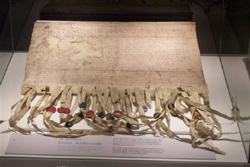 new display on the dedication, which includes an audio of the English translation of the original letter. One of the signatories to the Declaration of Arbroath was Sir Alexander Fraser, from whom the senior line of Clan Fraser is descended, Chamberlain of Scotland and Robert the Bruce’s brother-in-law.
new display on the dedication, which includes an audio of the English translation of the original letter. One of the signatories to the Declaration of Arbroath was Sir Alexander Fraser, from whom the senior line of Clan Fraser is descended, Chamberlain of Scotland and Robert the Bruce’s brother-in-law.
AULDEARN, BOATH DOOCOT and BATTLE SITE
Owned by the National Trust for Scotland and open all year round, with a box for donations for the upkeep of the site, it’s not really the Doocot itself which is of Fraser interest but the battle-plan for the Battle of Auldearn, which is at the same site. You can then work out exactly where the battle was fought, for, although the area isn’t built  up, the fact that it’s arable land makes it difficult to envisage the battlefield. The Battle of Auldearn was fought on 9th May 1645, when Montrose’s army defeated the Covenanters, whose army contained many Frasers. It’s said that the Battle left 87 Lovat Fraser widows, giving some idea of the number of Frasers who were actually involved.
up, the fact that it’s arable land makes it difficult to envisage the battlefield. The Battle of Auldearn was fought on 9th May 1645, when Montrose’s army defeated the Covenanters, whose army contained many Frasers. It’s said that the Battle left 87 Lovat Fraser widows, giving some idea of the number of Frasers who were actually involved.
BATTLE OF BANNOCKBURN CENTRE
The Bannockburn Heritage Centre, run by the National Trust for Scotland, is situated at one of the most important historic sites in Scotland. On the battlefield nearby, in June 1314, King Robert the Bruce routed the forces of King Edward II to win freedom for the Scots from English domination. Near the centre is the famous Borsestone site which by tradition was Bruce’s command post before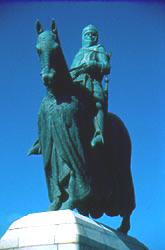 the battle; it is marked by an impressive equestrian statue of Bruce by Pilkington Jackson. The Centre contains an exhibition on the period of the battle, and audio-visual presentation. No one knows how many Frasers fought on that illustrious day but we do know Sir Alexander Fraser, from whom the senior Fraser line is descended was there, along with his brother Sir Simon, ancestor of the Lovat Frasers. Sir Alexander married Robert the Bruce’s widowed sister in 1316, became Chamberlain of Scotland in 1319 and was a major signatory to the Declaration of Arbroath in 6 April 1320, that date is now celebrated throughout the world as Tartan Day.
the battle; it is marked by an impressive equestrian statue of Bruce by Pilkington Jackson. The Centre contains an exhibition on the period of the battle, and audio-visual presentation. No one knows how many Frasers fought on that illustrious day but we do know Sir Alexander Fraser, from whom the senior Fraser line is descended was there, along with his brother Sir Simon, ancestor of the Lovat Frasers. Sir Alexander married Robert the Bruce’s widowed sister in 1316, became Chamberlain of Scotland in 1319 and was a major signatory to the Declaration of Arbroath in 6 April 1320, that date is now celebrated throughout the world as Tartan Day.
Bannockburn: Glasgow Road, Stirling FK7 0LJ A new centre is being built for 2014, so check what’s open and what isn’t.
BEAULY & LOVAT SCOUT MONUMENT
A lovely village, it is at the heart of Fraser of Lovat country, the regiment, The Lovat Scouts, was raised by the 16th Lord Lovat, for the Boer War, he realised the benefits of Highland knowledge and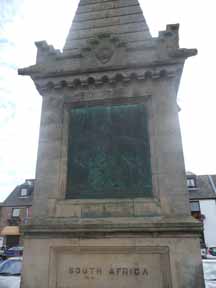 they could penetrate 15 miles behind the enemy lines without support. They were mounted Yeomanry and unusually they were mounted, not on horses but Highland garrons. They fought in many theatres of war e.g. Gallipoli in WWI and Italy in WWII.
they could penetrate 15 miles behind the enemy lines without support. They were mounted Yeomanry and unusually they were mounted, not on horses but Highland garrons. They fought in many theatres of war e.g. Gallipoli in WWI and Italy in WWII.
The village has a good smattering of traditional shops, tearooms and hotels, where the traditional Scots High Tea can be had. Beauly is also famous for the shortest railway platform in Britain. It’s situated on the Beauly Firth not far from Inverness.
BEAULY PRIORY, BEAULY, INVERNESS-SHIRE
In the centre of the lovely village of Beauly, near Inverness, this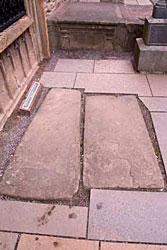 ancient Priory has long and ancient connections with the Frasers of Lovat and many chiefs are buried there including Hugh Fraser 3rd Lord Lovat, who was killed at Blar na Leine. It’s now a ruin but is an atmospheric building steeped in Fraser history. Run by Historic Scotland it’s open all year.
ancient Priory has long and ancient connections with the Frasers of Lovat and many chiefs are buried there including Hugh Fraser 3rd Lord Lovat, who was killed at Blar na Leine. It’s now a ruin but is an atmospheric building steeped in Fraser history. Run by Historic Scotland it’s open all year.
NEAR BEAULY, MONIACK CASTLE
The Winery and Visitor Centre is now closed, so there is no access to the public, however, we did receive permission to publish this statement, which shows clan values still exist.
“If you are driving from Inverness to Beauly you can take a short detour and drive past Moniack Castle. It is no longer open to visitors but it is interesting to pass by as Frasers have lived there since it was built. Moniack Castle is a 16th- century tower house located 7 miles (11 km) west of Inverness, and just south of Beauly in Highland, Scotland. The castle was built in 1580 by members of the Clan Fraser. The castle is protected as a category B listed building. The L-plan castle has been altered many times since its construction. The crenellated parapet was added in 1804 and the castle was extended in the 1830s. The interiors include a Roman Catholic chapel. In the grounds of the castle is the Balblair Stone, a Pictish symbol stone, carved with the figure of a man, which was moved here from Kilmorack in 1903.
Moniack Castle is the only castle that still belongs to a branch of the Lovat Frasers. This branch is known as the Moniack Frasers and is the largest off-shoot of the Lovat clan. The castle is occupied by the chief of the Moniack Frasers, Rory Fraser, known as “Moniack”, and his family.
NEAR BEAULY, WARDLAW MAUSOLEUM & LOVAT CASTLE
For many years the Wardlaw Mausoleum was the burial place of the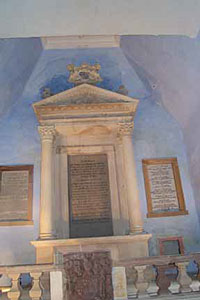 Lords of Lovat, after the chiefs ignored the traditional burial ground at Beauly Abbey. It was completed 1634/5 but fell into disrepair and a major renovation took place at the end of the last century and it was reopened in 1998. A number of mural plaques, to the various Fraser branches, are to be seen on the walls, including one to Rev James Fraser of Phopachy, the author of the Wardlaw Manuscripts but the most famous is the memorial raised by Simon, the Fox, to his father Thomas, 10th Lord Lovat. Below there is a crypt, a private burial chamber, where, the Fox and his immediate family are buried. It isn’t certain he is in there, after his beheading at the Tower of London, it is said his body was smuggled back. Whether or not this was achieved is open to debate.
Lords of Lovat, after the chiefs ignored the traditional burial ground at Beauly Abbey. It was completed 1634/5 but fell into disrepair and a major renovation took place at the end of the last century and it was reopened in 1998. A number of mural plaques, to the various Fraser branches, are to be seen on the walls, including one to Rev James Fraser of Phopachy, the author of the Wardlaw Manuscripts but the most famous is the memorial raised by Simon, the Fox, to his father Thomas, 10th Lord Lovat. Below there is a crypt, a private burial chamber, where, the Fox and his immediate family are buried. It isn’t certain he is in there, after his beheading at the Tower of London, it is said his body was smuggled back. Whether or not this was achieved is open to debate.
The latest line of Lovat chiefs are buried at St Mary’s in Eskadale, some say, few places can match the uniqueness and tranquillity of the rural Highland Church of St. Mary’s Eskadale.
From the tower there are stunning views over, what was Lovat Castle but you can only see outlines in the ground, to the Beauly Firth. There was a field in front of the Castle where the Frasers of Lovat would have assembled, their war-cry A’Mhorfhaich was taken from it.
Directions: The Mausoleum signed 8 miles West of Inverness, on the main Beauly-Inverness road, open April-September, Wednesdays AND Saturdays, 11-12 and 2-4. Admission is free, the crypt may be accessed but you would need to contact the guardian.
Pictures, Thomas Lord Lovat’s memorial. Views over Lovat Castle from Wardlaw Tower
BLAR NA LEINE or FIELD OF THE SHIRTS
One of Scotland’s most famous battles, it was fought to a standstill by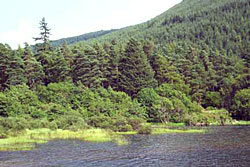 Frasers and MacDonalds, as it was an extremely hot day they stripped to their shirts, thus the name. It’s a very haunting setting by Laggan Locks on the Caledonian Canal.
Frasers and MacDonalds, as it was an extremely hot day they stripped to their shirts, thus the name. It’s a very haunting setting by Laggan Locks on the Caledonian Canal.
Directions: At the very Northern tip of Loch Lochy turn West, off the main Fort William Inverness road, Brown Tourist Sign “Caledonian Canal Locks”. There is an interesting marker by the Great Glen Way, put there by Highland Council, find it at http://www.highland.gov.uk/NR/rdonlyres/A8D9F1FD-2ABB-4FBD-95AA-D940D16736FC/0/new221_1480x480.pdf
BLACK WATCH REGIMENTAL MUSEUM
Based at Balhousie Castle Hay Street, Perth, well signed from the town centre this is an excellent regimental museum with details of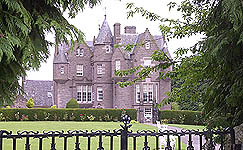 one of our Clan Fraser Victoria Cross holders, John Simpson 1843-1884. “Officers of The Black Watch. 1725-1986 Ed J L R Samson. p 90 Citation: For conspicuous bravery at the attack on the fort of Ruhya on 15 April1858, in having volunteered to go to an exposed point within 40 yards of the parapet of the fort under a heavy fire, and brought in, first Lt Douglas, and afterwards a private soldier, both of whom were dangerously wounded.” (Thanks to Thomas B Smythe, curator, for that information)
one of our Clan Fraser Victoria Cross holders, John Simpson 1843-1884. “Officers of The Black Watch. 1725-1986 Ed J L R Samson. p 90 Citation: For conspicuous bravery at the attack on the fort of Ruhya on 15 April1858, in having volunteered to go to an exposed point within 40 yards of the parapet of the fort under a heavy fire, and brought in, first Lt Douglas, and afterwards a private soldier, both of whom were dangerously wounded.” (Thanks to Thomas B Smythe, curator, for that information)
Also, Lord Lovat, the Fox, was in charge of one of its founding companies but it was disbanded, some say he was using it to support Jacobite sympathies, others, he was lining his own pocket.
Open all year except the Festive Season http://www.theblackwatch.co.uk/
BLACK WATCH MONUMENT, ABERFELDY, PERTHSHIRE 
A striking monument to the Black Watch Regiment set in the in picturesque Aberfeldy, by the banks of the river Tay, near Wade’s Bridge.
CASTLE FRASER
The most elaborate Z -plan castle in Scotland, and one of the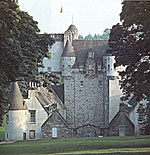 grandest Castles of Mar, Castle Fraser was built between 1575 and 1636 by the 6th laird, Michael Fraser, and was the supreme work of two great families of master masons, Berll and Leiper. The castle belongs to the same period of native architectural achievement as two neighbouring castles, Crathes and Craigievar, both owned by the Trust. One of its most evocative rooms is the strikingly simple Great Hall. The castle contains many Fraser family portraits, including one by Raeburn, and fine 18th and 19th century carpets, curtains and bed hangings.
grandest Castles of Mar, Castle Fraser was built between 1575 and 1636 by the 6th laird, Michael Fraser, and was the supreme work of two great families of master masons, Berll and Leiper. The castle belongs to the same period of native architectural achievement as two neighbouring castles, Crathes and Craigievar, both owned by the Trust. One of its most evocative rooms is the strikingly simple Great Hall. The castle contains many Fraser family portraits, including one by Raeburn, and fine 18th and 19th century carpets, curtains and bed hangings.
One of the 17th Century ‘laigh biggins’ now contains a shop selling exclusive gifts. The historic walled garden features shrubs, flowers, wall-trained fruit and vegetables. The estate contains a flight pond, mixed woodland and open farmland, with two waymarked walks giving magnificent views of the local hills. There is also an excellent tearoom with home baked produce.
exclusive gifts. The historic walled garden features shrubs, flowers, wall-trained fruit and vegetables. The estate contains a flight pond, mixed woodland and open farmland, with two waymarked walks giving magnificent views of the local hills. There is also an excellent tearoom with home baked produce.
Address: Sauchen, Inverurie, Aberdeenshire AB51 7LD, well signed from main road. email: castlefraser@nts.org.uk Free admission when you have National Trust for Scotland Membership. You can also book yourself a holiday apartment at the castle or just have a snack or a meal. The castle is open for the normal months the NTS tend to open but the gardens are open all year. The Society would like to thank the National Trust for Scotland for the information provided and the efficient help they gave us.
ELYZA FRASER MAUSOLEUM
Is situated in Cluny Kirkyard, nearby to the Castle and is a Category A listed building 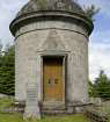 built, by James Byres of Tonley, for Elyza Fraser herself, who was the first woman to inherit Castle Fraser and its grounds in 1792. It’s in need of repair but The Friends of Miss Elyza Fraser’s Mausoleum are working to repair and open the building to the public. Some more information on the Preservation Trust website.
built, by James Byres of Tonley, for Elyza Fraser herself, who was the first woman to inherit Castle Fraser and its grounds in 1792. It’s in need of repair but The Friends of Miss Elyza Fraser’s Mausoleum are working to repair and open the building to the public. Some more information on the Preservation Trust website.
CULLODEN
Culloden Battlefield and new Visitor Centre, National Trust for Scotland, open all year, although the Centre shuts over the Festive Season. The centre has a fascinating Jacobite exhibition including an audiovisual presentation. Battlefield tours and Living History presentations in summer season, or by arrangement. There is also an excellent book and gift shop, and our Taste of Scotland restaurant.
The Frasers stood in the front line of the Jacobite army. The Appin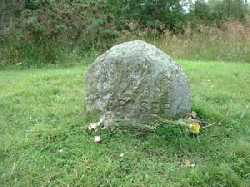 regiment was on their left and Clan Chattan on their right. They were commanded by Lieutenant Colonel Charles Fraser of Inverallochie. It is thought that there were up to 500 Frasers on the field that day and casualties are reckoned to be as high as 250 killed. The battle saw the end of Bonnie Prince Charlie’s rebellion/counter revolution and the Highland way of life. Although he took no part in the rebellion, the Fox, 12th Lord Lovat, was the last person to be beheaded at the Tower of London, as he obeyed the Scots law of hospitality and gave shelter to the Prince, as he fled. After the battle a Major James Wolfe disobeyed a direct order by the Duke of Cumberland to shoot a prisoner, a 20 year old colonel of the Frasers, Charles Fraser of Inverallochy, unfortunately Cumberland ordered a passing soldier to do the deed but that major 12 years later was in charge of the British army in Quebec, where the influence of the Fraser Highlanders was immense.
regiment was on their left and Clan Chattan on their right. They were commanded by Lieutenant Colonel Charles Fraser of Inverallochie. It is thought that there were up to 500 Frasers on the field that day and casualties are reckoned to be as high as 250 killed. The battle saw the end of Bonnie Prince Charlie’s rebellion/counter revolution and the Highland way of life. Although he took no part in the rebellion, the Fox, 12th Lord Lovat, was the last person to be beheaded at the Tower of London, as he obeyed the Scots law of hospitality and gave shelter to the Prince, as he fled. After the battle a Major James Wolfe disobeyed a direct order by the Duke of Cumberland to shoot a prisoner, a 20 year old colonel of the Frasers, Charles Fraser of Inverallochy, unfortunately Cumberland ordered a passing soldier to do the deed but that major 12 years later was in charge of the British army in Quebec, where the influence of the Fraser Highlanders was immense.
It’s a beautiful and well run battlefield, with so much history attached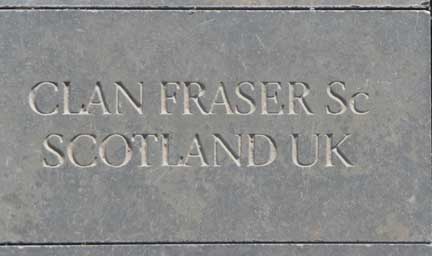 and many thanks to the staff at the National Trust for Scotland Visitors centre for their help in putting this section together. Look out for the CFSSUK Stone on the walkway from the car park, ask at reception for CSS 601, if you can’t find it and also look for the marker for the Frasers who fell, see top image.
and many thanks to the staff at the National Trust for Scotland Visitors centre for their help in putting this section together. Look out for the CFSSUK Stone on the walkway from the car park, ask at reception for CSS 601, if you can’t find it and also look for the marker for the Frasers who fell, see top image.
EDINBURGH, ROSSLYN CHAPEL BATTLEFIELDS
Edinburgh is one of the world’s most remarkable cities, with many direct and indirect Fraser connections. Rosslyn Chapel, on the northern outskirts of the city has a wonderful frieze showing how the Scots came to America before Columbus, well, didn’t everyone? 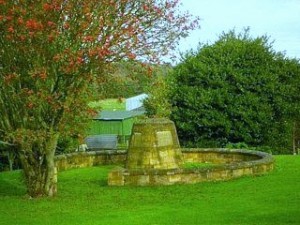 However, it’s the nearby grounds that have the Fraser connection, there’s not a lot to see but just drink up the atmosphere of where the compatriot of William Wallace, Sir Simon Fraser “The Patriot”, defeated the English Armies three times in one day. The Battle of Roslin was a battle of the First War of Scottish Independence, taking place on 24 February 1303.
However, it’s the nearby grounds that have the Fraser connection, there’s not a lot to see but just drink up the atmosphere of where the compatriot of William Wallace, Sir Simon Fraser “The Patriot”, defeated the English Armies three times in one day. The Battle of Roslin was a battle of the First War of Scottish Independence, taking place on 24 February 1303.
FRASERBURGH
Once the fishing village of Faithlie, Fraserburgh, nicknamed the Broch, lying 40 miles north of Aberdeen, is now a very cosmopolitan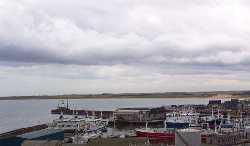 town and claims to be the largest shellfish port in Europe. The area has been home to the Lairds of Philorth for centuries, Alexander Fraser 7th Laird built the harbour in 1546, Sir Alexander, the 8th Laird of Philorth, best known as the Founder of Fraserburgh, built Fraserburgh Castle in 1570, now Kinnaird lighthouse and receiving 2 charters from King James VI, he called the new Burgh and Free Port, Fraser’s Burgh. He was also authorised to build a University but it didn’t last. For Frasers there are the Kinnaird Lighthouse Museum and the Heritage Centre, with its Fraser Connection display, to visit as well as interesting surrounding countryside. It’s also the birthplace of Thomas Blake Glover 1839-1911, The Scottish Samurai.
town and claims to be the largest shellfish port in Europe. The area has been home to the Lairds of Philorth for centuries, Alexander Fraser 7th Laird built the harbour in 1546, Sir Alexander, the 8th Laird of Philorth, best known as the Founder of Fraserburgh, built Fraserburgh Castle in 1570, now Kinnaird lighthouse and receiving 2 charters from King James VI, he called the new Burgh and Free Port, Fraser’s Burgh. He was also authorised to build a University but it didn’t last. For Frasers there are the Kinnaird Lighthouse Museum and the Heritage Centre, with its Fraser Connection display, to visit as well as interesting surrounding countryside. It’s also the birthplace of Thomas Blake Glover 1839-1911, The Scottish Samurai.
FRASERBURGH HERITAGE CENTRE
Quarry Road, Fraserburgh, Aberdeenshire located next to the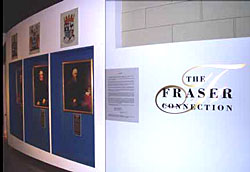 Museum of Scottish Lighthouses, Open Apr- Oct. The exhibition area featuring the model of Broadsea village has been changed and throughout the summer this area also features a display on small line fishing.
Museum of Scottish Lighthouses, Open Apr- Oct. The exhibition area featuring the model of Broadsea village has been changed and throughout the summer this area also features a display on small line fishing.
Local industry is highlighted with the creation of hands-on displays. The area dedicated to Marconi, who carried out many of his early experiments on radio in the town, has been given an added dimension, while the area on Famous Brochers including Thomas Blake Glover, Bill Gibb and Dr David Murison has also been improved. A fascinating new section on the history of fishing in Fraserburgh has also been created. And a new section on fish conservation and the marine environment aimed at primary school age children. The display on the work of the lifeboat crews now features a breeches buoy which can be worked by young visitors and there’s section dedicated to the Second World War There’s a gift shop with Aberdeenshire products, child activities, WC, wheelchair access and plenty of car and coach parking space, but of course what is of most interest to Frasers is the Fraser Connection, a history of the Frasers of Philorth. The museum was also opened by Lady Saltoun.
FRASERBURGH MUSEUM OF SCOTTISH LIGHTHOUSES
The Museum of Scottish Lighthouses at Fraserburgh offers a unique experience and is one of the main places of interest to visit in the North East. Constructed around the original Fraserburgh Castle, built by the 8th Laird of Philorth, Sir Alexander Fraser in 1570 and it was saved from destruction by Walter Scott. Now Kinnaird Head Lighthouse, it was the first lit by the newly formed Northern Lighthouse Board in 1787. Today it provides the centrepiece for the story of Scotland’s lighthouse service. The purpose built museum contains one of the largest collections of lighthouse lenses and equipment in the United Kingdom. It is difficult for us today to imagine the daunting task that lay before these early pioneers of lighthouse technology. Back in 1787 the commissioners found the expertise they were looking for in Thomas Smith. Smith had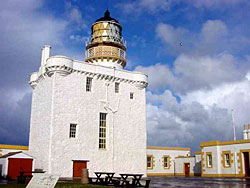 proposed a method of lights using wicks burning whale oil in front of a mosaic of reflectors. Installing this unique system for the very first light at Fraserburgh he was to go on to create many of Scotland’s early lighthouses and establish the family dynasty of Stevenson engineers that would influence and dominate lighthouse innovation and construction around the world for the next 150 years.
proposed a method of lights using wicks burning whale oil in front of a mosaic of reflectors. Installing this unique system for the very first light at Fraserburgh he was to go on to create many of Scotland’s early lighthouses and establish the family dynasty of Stevenson engineers that would influence and dominate lighthouse innovation and construction around the world for the next 150 years.
The Museum contains multi-screen audiovisual presentations and tells the story of Thomas Smith and Robert Stevenson one of the Lighthouse Stevensons and the grandfather of Robert Louis Stevenson. With a unique guided tour to the very top of the lighthouse and the stunning views along the Buchan coast the visit is only complete having rested and refreshed in the Lighthouse Café. Open all year round allow two hours for the visit. The Museum is well signed from the town and is next door to the Heritage Centre in Fraserburgh.
FRASERBURGH, WINE TOWER, FRASERBURGH CASTLE, KINNAIRD HEAD
Lady Saltoun mentions the legend of the Wine Tower in her book,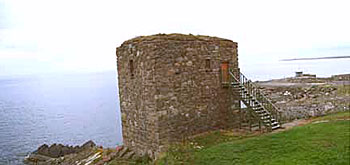 Clan Fraser and the ballad written about two love struck youngsters and their tragic deaths. It’s situated behind the Lighthouse museum, with spectacular views over Fraserburgh harbour.
Clan Fraser and the ballad written about two love struck youngsters and their tragic deaths. It’s situated behind the Lighthouse museum, with spectacular views over Fraserburgh harbour.
INVERNESS CITY and ABERTARFF HOUSE
Recently made a city, Inverness is known as both “The Capital of”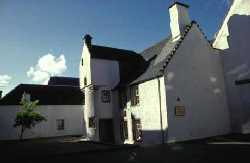 and “The Gateway to” The Highlands. Having seen centuries of turbulence and change the city is now a modern and thriving place. Sitting at the North end of Loch Ness, home of the famous monster and the Caledonian Canal, one of the country’s largest and most expensive civil construction projects and near so many Fraser places of interest e.g. Beauly, it’s well worth a visit, with lots to do and see, in and around the city. As any genealogist will tell you it’s easier trying to trace the ancestors of a Smith rather than a Fraser, there are so many of us.
and “The Gateway to” The Highlands. Having seen centuries of turbulence and change the city is now a modern and thriving place. Sitting at the North end of Loch Ness, home of the famous monster and the Caledonian Canal, one of the country’s largest and most expensive civil construction projects and near so many Fraser places of interest e.g. Beauly, it’s well worth a visit, with lots to do and see, in and around the city. As any genealogist will tell you it’s easier trying to trace the ancestors of a Smith rather than a Fraser, there are so many of us.
A stunning old house right in the middle of the city is Abertarff House, formerly the Highlands and Islands Regional Office of the National Trust for Scotland, the building now houses a jewellery shop. This has been a Fraser property for centuries and it’s good it still has a functional use. The last Fraser to live there was T F Fraser, an illegitimate member the Lovat Frasers family, known as Fraser of Abertarff.
INVERNESS, THE HIGHLANDERS MUSEUM, FORT GEORGE
Once the Seaforth and Camerons, then the Queens Own Highlanders museum, now it’s The Highlanders Museum, it also covers the Royal Regiment of Scotland, echoing the changes in the modern British Army. As an allied Regiment, there is a section dedicated to The Lovat Scouts to be found here. It’s located in the former Fort Governor’s house and Officers’ Mess in Fort George, Ardersier. Fort George is open all year, apart from the festive period and is looked after by Historic Scotland. The Museum is currently closed for refurbishment with a scheduled re-opening in Easter 2013. The Yeomanry Regiment of the Lovat Scouts was raised by Simon Joseph Fraser 16th Lord Lovat, in January 1900, for use in the Boer War in South Africa. He recognised the unique qualities of the Highlander and they operated as teams of scouts, penetrating miles behind the enemy lines without assistance. Mounted on garrons, not horses, they were ideal for the job. However, changing war methods had their role changed and they were sent into Gallipoli, unmounted, in WWI but they did serve in their proper role as spotters and sharpshooters and saved many lives as they covered the allies in the retreat from Suvla Bay, some say it was their greatest achievement, as not one Allied life was lost. In WWII they were the guardians of the Faroe Islands, then trained as a mountain regiment near Jasper, in the Canadian Rockies but were sent into Italy where they gave valiant service.
Many thanks to The Highlanders Museum for the information given to us and the image of King George VI and the Royal family with the Sergeants of the Lovat Scouts, Balmoral 1943.
KILLIECRANKIE PASS, SOLDIERS LEAP and BLAIR ATHOLL
Here a famous victory took place for Jacobite troops, opposed to King William of Orange in 27 July 1689 lead by John Graham of Claverhouse, “Bonnie Dundee”, however, he died in the battle and the rebellion soon fizzled out. The story goes that, 300 Frasers joined a muster at Blair Castle, called by Lord Tullibardine and on finding out that he was supporting King William and the Scottish government, they walked off the parade ground. They stopped to drink the Stuart King James’ health, at a nearby stream, having no whisky, water had to suffice and their bonnets became glasses, then joined Bonnie Dundee and were in the middle of the fighting that lead to the victory. The battle is also famous for its Soldier’s Leap, a government soldier was about to die at the hands of some highlanders, as he tried to escape, his only chance was to chance an incredible leap across a gorge, this he succeeded in doing and gained his freedom, as no one could follow.
There’s a National Trust for Scotland visitor centre, tearoom and the Soldiers Leap is well signed, with walks through the woods Signed off of the main Perth Inverness road, South of Blair Atholl village, where there’s Blair Castle, with superb caravan park, good hotels, interesting country life museum, the grave of Bonnie Dundee and 2 miles to the North the House of Bruar shopping outlet.
Soldiers Leap is well signed, with walks through the woods Signed off of the main Perth Inverness road, South of Blair Atholl village, where there’s Blair Castle, with superb caravan park, good hotels, interesting country life museum, the grave of Bonnie Dundee and 2 miles to the North the House of Bruar shopping outlet.
LOCH NESS
An area of exceptional beauty, the loch is surrounded by mountains and to a large extent, the traditional clan lands of the Frasers, it is the second largest Scottish loch by surface area after Loch Lomond but![]() due to its great depth, it is the largest by volume. Also, there’s the famous monster, which is still being sighted, could it be a Fraser too? With the city of Inverness at the
due to its great depth, it is the largest by volume. Also, there’s the famous monster, which is still being sighted, could it be a Fraser too? With the city of Inverness at the  Northern end and Fort Augustus at the south, there’s plenty to do and see around the loch. Most people travel up the Western side but try the Eastern roads, right in the heart of Fraser country and see some spectacular views of the mountains and the loch itself, maybe even the monster. Try the interactive map on this Loch Ness site to find your way around.
Northern end and Fort Augustus at the south, there’s plenty to do and see around the loch. Most people travel up the Western side but try the Eastern roads, right in the heart of Fraser country and see some spectacular views of the mountains and the loch itself, maybe even the monster. Try the interactive map on this Loch Ness site to find your way around.
LOCH NESS, FORT AUGUSTUS AND THE ABBEY
There has been a strong Fraser connection here for centuries, in what was originally Kiliwhimin, as it was part of Fraser of Lovat lands. A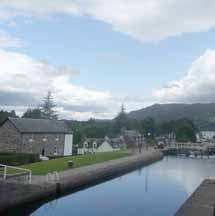 fort was built from 1729 to 1742, on land sold by the Lovats, to help subdue the Highlands and ironically the Fox, 11th Lord Lovat, was held here on the way to his execution in London. Later in 1857 it was bought by the Lovat Frasers and the 13th Lord Lovat gave the site to the Benedictines who built a monastery, which then became an Abbey. The monks left in the late 1990s and it was eventually sold to a developer and it’s now converted into a private set of apartments but there is a right of way past it to the most wonderful views of Loch Ness. The Caledonian Canal passes through the village, there’s a Lovat Arms Hotel and it’s a busy and pleasant place.
fort was built from 1729 to 1742, on land sold by the Lovats, to help subdue the Highlands and ironically the Fox, 11th Lord Lovat, was held here on the way to his execution in London. Later in 1857 it was bought by the Lovat Frasers and the 13th Lord Lovat gave the site to the Benedictines who built a monastery, which then became an Abbey. The monks left in the late 1990s and it was eventually sold to a developer and it’s now converted into a private set of apartments but there is a right of way past it to the most wonderful views of Loch Ness. The Caledonian Canal passes through the village, there’s a Lovat Arms Hotel and it’s a busy and pleasant place.
LONDON, SIMS VC, CITY OF LONDON CEMETERY
It’s not often graveyards welcome all comers but City of London Cemetery, are very forward thinking and really encourage people to visit the cemetery and organise Heritage Tours which take place on a monthly basis, usually at 10am and 2pm on a Sunday and take around 3 hours. The cemetery has nearly 150 historic graves and people often visit to view the graves of some of the famous and notorious. They have within their grounds the final resting places of Dame Anna Neagle, two of the victims of Jack the Ripper, and two recipients of the Victoria Cross.
“Many people tend to think of cemeteries as sad places that you need to visit only when someone dies, or on anniversaries to place flowers on a grave. We are far more than that however. Cemeteries are an important part of the community and should be looked on more as a community facility. Yes we bury and cremate the deceased, but we are also very much here for the living. The City of London Cemetery contains 200 acres of beautifully maintained grounds that can give immense satisfaction to the bereaved and indeed all visitors to our grounds.”
We thank City of London Cemetery and Crematorium for supplying the information and image http://www.cityoflondon.gov.uk/cemetery
Our connection to the cemetery is, a member of a sept of Clan Fraser, a John Joseph Sims VC, a very brave man who died in tragic poverty. John Joseph Sims VC was born in Bloomsbury in Central London in the year of 1835. He joined the Border Regiment (originally known as the 1st Battalion, 34th Regiment) and was posted to the Crimea. He won his VC when he was only 19 years old, for action at the Siege of Sebastopol: For having, on 18th June 1855, after the Regiment had retired into the trenches from the assault on the Redan, gone out into the open ground under a heavy fire in broad daylight and brought in wounded soldiers from outside the trenches’. John was one of those present at the very first investiture of the Victoria Cross on 26th June 1857 in Hyde Park. At this event Queen Victoria herself presented the newly struck Cross to John and 61 others.
a John Joseph Sims VC, a very brave man who died in tragic poverty. John Joseph Sims VC was born in Bloomsbury in Central London in the year of 1835. He joined the Border Regiment (originally known as the 1st Battalion, 34th Regiment) and was posted to the Crimea. He won his VC when he was only 19 years old, for action at the Siege of Sebastopol: For having, on 18th June 1855, after the Regiment had retired into the trenches from the assault on the Redan, gone out into the open ground under a heavy fire in broad daylight and brought in wounded soldiers from outside the trenches’. John was one of those present at the very first investiture of the Victoria Cross on 26th June 1857 in Hyde Park. At this event Queen Victoria herself presented the newly struck Cross to John and 61 others.
John died at the early age of 46 from tuberculosis on 6th December 1881 at the Union Workhouse, Thaives Inn, City of London, and was buried in the City of London Cemetery in a common grave. Sadly, the location of John’s VC is unknown, as it has never been sold or auctioned and is not known to be held privately. A Heritage plaque was placed on John’s grave in April of 2003 thereby marking the grave of a very brave young man for the first time in over 120 years. John’s grave forms part of City of London Cemetery Heritage Tours, and is also featured in their Heritage Brochure, at least they let people of today know of his heroic actions of so long ago.
LONDON, TOWER OF LONDON
Truly a world-class tourist attraction but with a brutal history. Sir Simon Fraser, known as “The Patriot” was captured fighting for Robert the Bruce and was held in the Tower before being brutally executed, his head was then displayed beside his compatriot, the great Scots hero, William Wallace at London Bridge.
Simon Fraser, known as “The Patriot” was captured fighting for Robert the Bruce and was held in the Tower before being brutally executed, his head was then displayed beside his compatriot, the great Scots hero, William Wallace at London Bridge.
The 11th Lord Lovat, the Fox, was imprisoned, then executed on 9 April 1747,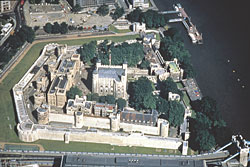 for his Jacobite sympathies, the last person to be beheaded at the Tower. Although an Octogenarian he went to his death full of humour, it’s Worth repeating his last remarks just before he was beheaded. “A woman called from the crowd. “you’ll loose your head, you old Scottish dog.” He called back cheerfully. “I believe I shall, you old English bitch. “
for his Jacobite sympathies, the last person to be beheaded at the Tower. Although an Octogenarian he went to his death full of humour, it’s Worth repeating his last remarks just before he was beheaded. “A woman called from the crowd. “you’ll loose your head, you old Scottish dog.” He called back cheerfully. “I believe I shall, you old English bitch. “
As Lovat reached the scaffold word came that a section of the grandstand had collapsed killing 22 thrill seekers. Simon’s comment, “the more the mischief the merrier the sport”
As he was about to lay his head on the block he said to the executioner, “Here, sir, is ten guineas for you. Pray do your work well, for if you should cut and hack my shoulders and I should be able to rise again, I should be angry with you!”
However, the axeman did as he was bid and swung his weapon so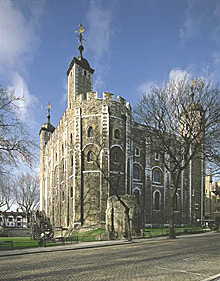 hard that it buried itself two inches into the wooden block. The Tower of London is home to the English Crown Jewels, the eight ravens and the 38 Beefeaters and their families. In its 1,000 year history it has been a Royal Palace, treasury, record office, armoury, Royal Mint, Royal Zoo and of course, a prison.
hard that it buried itself two inches into the wooden block. The Tower of London is home to the English Crown Jewels, the eight ravens and the 38 Beefeaters and their families. In its 1,000 year history it has been a Royal Palace, treasury, record office, armoury, Royal Mint, Royal Zoo and of course, a prison.
Thanks to Historic Scotland for use of their image of William Wallace.
PEEBLES, NEIDPATH CASTLE
From about 1200 the Lords of the castle were a family of Frasers, of whom the last, a compatriot of William Wallace, Sir Simon Fraser “The Patriot”, defeated the English Armies three times in one day at Roslin, 15 miles north of Neidpath. The Lordship went to the Hay Family in 1312. The castle has been in Douglas hands and now the Earl of Wemyss is the present owner and is to be found on the outskirts of Peebles. The Castle isn’t open to the public on a regular basis but the Estate is very happy to open for any groups that may wish a tour by prior arrangement and it is also available for weddings and functions www.neidpathcastle.com
“The Patriot”, defeated the English Armies three times in one day at Roslin, 15 miles north of Neidpath. The Lordship went to the Hay Family in 1312. The castle has been in Douglas hands and now the Earl of Wemyss is the present owner and is to be found on the outskirts of Peebles. The Castle isn’t open to the public on a regular basis but the Estate is very happy to open for any groups that may wish a tour by prior arrangement and it is also available for weddings and functions www.neidpathcastle.com
Thanks to Anne Fraser for the photograph.
NEAR PEEBLES, OLIVER CASTLE, TWEEDSMUIR
An important castle in early Fraser history and was named for Oliver Fraser who died without issue but the Frasers continued to exert power from Oliver Castle with Sir Bernard Fraser and Sir Gilbert Fraser. A descendant, Sir Simon Fraser was the famous “Patriot” who fought alongside William Wallace in the Scottish Wars of Independence.
The following information is from Douglas Gregor who actually lives in the Tweeddale area in Scotland. “Oliver Castle (Site). The O.S. map marks the site of Oliver Castle on a low knoll on the SE slopes of Nether Oliver Dod, about 200yds. NE. of the present house of Oliver, which may have used some of the old stones, from the castle in its construction. To judge from surface indications it’s impossible to tell if there was a medieval castle, and in the absence of excavation it is impossible to confirm the traditional identification of the site.”
SPEAN BRIDGE, COMMANDO MONUMENT
Simon Fraser, 17th Lord Lovat, 1911-1995, was a famous commando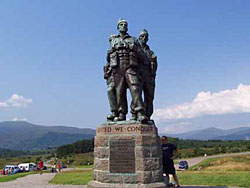 leader, remembered for his D Day landing with his personal piper; he was wounded soon after and awarded the Distinguished Service Order and Military Cross. This evocative memorial is set in stunning scenery, on the main road to Inverness at Spean Bridge, North of Fort William and near the famous WWII Commando training school at Achnacarry. Lord Lovat is also given credit for organizing special training for the commandos and taking the training into the challenging Highlands. This was first cantered at Inverailort and Loch Ailort, but was later set up on much larger scale at Achnacarry.
leader, remembered for his D Day landing with his personal piper; he was wounded soon after and awarded the Distinguished Service Order and Military Cross. This evocative memorial is set in stunning scenery, on the main road to Inverness at Spean Bridge, North of Fort William and near the famous WWII Commando training school at Achnacarry. Lord Lovat is also given credit for organizing special training for the commandos and taking the training into the challenging Highlands. This was first cantered at Inverailort and Loch Ailort, but was later set up on much larger scale at Achnacarry.
STIRLING CASTLE & TOWN, ARGYLL & SUTHERLAND HIGHLANDERS MUSEUM
The museum is custodian to the Victoria Cross of a brave Fraser, Major Bissett VC 1893-1971. “BISSETT, WILLIAM DAVIDSON. For  most conspicuous bravery and leadership east of Maine, France, on 25th October, 1918, when in command of a platoon, which he led to its objective with great dash. Later, owing to casualties he took command of the company and handled it with great skill after a determined enemy counter attack had turned his left flank. Realising the danger he withdrew to the railway thus temporarily saving the situation. The enemy however continued to advance in force after his men had exhausted their ammunition. Thereupon, under heavy fire he mounted the railway embankment, and calling to his men to charge with the bayonet, drove back the enemy with heavy loss, and later again charging forward established his line. By his splendid example and fine leadership, Lieutenant Bissett was the means of saving a critical situation.
most conspicuous bravery and leadership east of Maine, France, on 25th October, 1918, when in command of a platoon, which he led to its objective with great dash. Later, owing to casualties he took command of the company and handled it with great skill after a determined enemy counter attack had turned his left flank. Realising the danger he withdrew to the railway thus temporarily saving the situation. The enemy however continued to advance in force after his men had exhausted their ammunition. Thereupon, under heavy fire he mounted the railway embankment, and calling to his men to charge with the bayonet, drove back the enemy with heavy loss, and later again charging forward established his line. By his splendid example and fine leadership, Lieutenant Bissett was the means of saving a critical situation.
Entrance to the museum is free however Historic Scotland, the body which looks after the rest of the Stirling Castle, charges both a car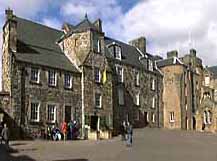 park fee and an entrance fee. Website http://www.argylls.co.uk The magnificent castle is of great historic and strategic importance to Scotland, with many battles being fought in the area and is well worth a visit, as is the town, once capital of Scotland, for its many ancient buildings and also make sure to visit the National Wallace Monument.
park fee and an entrance fee. Website http://www.argylls.co.uk The magnificent castle is of great historic and strategic importance to Scotland, with many battles being fought in the area and is well worth a visit, as is the town, once capital of Scotland, for its many ancient buildings and also make sure to visit the National Wallace Monument.
SUTTON ON TRENT, NEWARK, NOTTS, OLDE ENGLAND HOTEL
Unfortunately, the hotel, which has been in the Pike family since it was built in 1926, closed in June 2003, due to family ill health but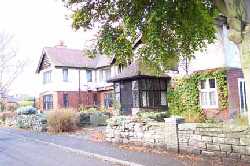 you can still feel the history in this quintessentially English village. The officers of the Lovat Scouts were stationed here during the war, the rest of the troops were at nearby Carlton Hall, It’s an important part of their history, as two things took place, Lord Lovat, who was an officer left them, more pushed than pulled, to join the commandos and they ceased to be a mounted regiment. The locals welcomed them, even though they had difficulty understanding their Gaelic and one even married a local girl. They sailed from Glasgow, on May 23 1940, to the Faroe Islands, where they were the only thing between the islander’s freedom and a German invasion. Thanks to the late K B Hemstock, village historian for the information.
you can still feel the history in this quintessentially English village. The officers of the Lovat Scouts were stationed here during the war, the rest of the troops were at nearby Carlton Hall, It’s an important part of their history, as two things took place, Lord Lovat, who was an officer left them, more pushed than pulled, to join the commandos and they ceased to be a mounted regiment. The locals welcomed them, even though they had difficulty understanding their Gaelic and one even married a local girl. They sailed from Glasgow, on May 23 1940, to the Faroe Islands, where they were the only thing between the islander’s freedom and a German invasion. Thanks to the late K B Hemstock, village historian for the information.
WEST LOTHIAN, MEMORIAL to SIR SIMON FRASER, THE PATRIOT, ALMONDELL PARK
Sir Simon Fraser, known as “The Patriot” was captured fighting for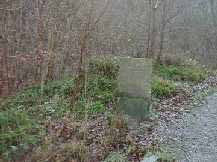 Robert the Bruce and was held in the Tower of London, before being brutally executed in 1306, his head was then displayed beside his compatriot, the great Scots hero, William Wallace at London Bridge. In the late 18th century the Countess of Buchan raised a memorial to Sir Simon, there is another memorial stone to William Wallace, The Braveheart, nearby and Sir Simon’s stone is easily accessible, by a pathway, by the River Almond, in Almondell Country Park, near Livingstone, West Lothian. An inscription on the stone reads
Robert the Bruce and was held in the Tower of London, before being brutally executed in 1306, his head was then displayed beside his compatriot, the great Scots hero, William Wallace at London Bridge. In the late 18th century the Countess of Buchan raised a memorial to Sir Simon, there is another memorial stone to William Wallace, The Braveheart, nearby and Sir Simon’s stone is easily accessible, by a pathway, by the River Almond, in Almondell Country Park, near Livingstone, West Lothian. An inscription on the stone reads
MARGARET COUNTESS OF BUCHAN
DEDICATED THIS FOREST
TO HER ANCESTOR SIR SIMON FRASER
OCTOBER XVMDCCLXXXIV
WINCHESTER, SIR CHARLES FRASER VC, HUSSARS MUSEUM
Sir Charles served with different Hussars regiments, won his VC with them and was commander of the 11th Hussars, at one time. The regimental museum, The King’s Royal Hussars Museum, is at Peninsula Barracks, Romsey Road, Winchester, SO23 8TS.
http://www.horsepowermuseum.co.uk There you can “follow the story of these famous regiments from 1715, to discover how the country lived and fought. The 10th Royal Hussars, The Eleventh Hussars, The Royal Hussars and The King’s Royal Hussars“. Amongst items there’s the battered trumpet, carried at the Charge of the Light Brigade, an actual diary from that eventful day, a WWI trench and explore the Regiments latest tanks, using the interactive Challenger 2 CD Rom simulator Whilst the museum is well worth a visit, there isn’t anything directly on show about Sir Charles Craufurd Fraser, here are some details of that courageous man’s life.
FRASER, CHARLES CRAUFURD, VC (afterwards Sir Charles Craufurd KCB) Cornet 7th Hussars – 3 Dec 1847; Lieutenant – 14 June 1850; Captain – 21 April 1854; Brevet Major – 20 July 1858; Major – 13 May 1859; 11th Hussars – 16 August 1859; Lieutenant Colonel – 18 January 1861; Commanded the 11th Hussars 1861 – 1873; Brevet Colonel – 18 January 1866, half pay 16 July 1873; Major General – 25 July 1870 (1 October 1877); Colonel 8th Hussars – 25 June 1886; Lieutenant General – 1 October 1886. ADC to HRH the Field Marshal Commander-in-Chief – 16 July 1873 to 1 October 1877. Inspector-General of Cavalry in Ireland 1880-1884. KCB – 30 May 1891. Retired pay – 1 January 1890.
Sir Charles Fraser served as Orderly Officer to Brigadier Campbell at that affair of Munseata near Allahabad, 5 January 1858 and subsequently with the 7th Hussars in the Indian Mutiny Campaign, February to July 1858 and December 1858 to March 1859; present at the affair of Meeangunge, siege and capture of Lucknow, affairs of Baree and Sirsee (horse wounded), action of Nawabgunge (severely Wounded), and throughout the Trans-Gogra Campaign (mentioned in Sir Hope Grant’s despatches for “most conspicuous gallantry at Nawabgunge”. Medal with clasp, and Brevet of Major; VC for conspicuous and cool gallantry on 31 December 1858, in having volunteered at great personal risk, and under a sharp fire of musketry, to swim to the rescue of Captain Sister and some men of the 7th Hussars, who were in imminent danger of being drowned in the river Rapt, while in pursuit of the rebels; in which gallant service he succeeded, although at the time partially disabled from effects of wound received at Nawabgunge. (Sir Charles also received the silver medal of the Royal Humane Society for this service).
Served in the Abyssinian Campaign, 1868, and was present at the action of Arogee and capture of Magdala (Mentioned In Despatches “for unceasing vigilance”; CB and Medal). He was also in receipt of the “Reward for Distinguished and Meritorious Service”. Sir Charles was MP for North Lambeth 1885-1892. Second son of Sir James John Fraser, 3rd Baronet, Lt Col 7th Hussars who served in the Peninsula and at Waterloo. Sir Charles died at Sloane Street, London on 7 June 1895, aged 65, he never married. Source: ‘The Historical Records of The Eleventh Hussars Prince Albert’s Own 1715-1908′ by Captain G T Williams. We’d like to thank Angie Wallace and former Curator/Regimental Secretary Major P J C Beresford of the museum, for their help in providing the information.
like to thank Angie Wallace and former Curator/Regimental Secretary Major P J C Beresford of the museum, for their help in providing the information.
Image is a sword presented to Sir Charles by “Gen: Hastings Fraser C.B. to his nephew Cornet Charles Fraser.”
WORCESTER, BATTLE OF WORCESTER, ENGLAND
In 1651 King Charles, against much advice, headed south with 14,000-16,000 men and after a three-week march, they received a warm welcome from the citizens of Worcester, on 23rd August 1651. On the 27th, as he rested his weary army, Cromwell reached Evesham, effectively barring the King’s route to London. Hearing of this development the Scots began to prepare Worcester for defence. On the 28th the Roundheads, under Lambert, took the bridge at Upton and 12,000 men assembled on the West bank of the Severn ready for an assault along the Terne River North of Powick. Cromwell, meantime, had pressed his outposts to within “half a musket shot” of the Scots, on Red Hill, east of the city. On the 3rd September he let loose 30,000 of his New Model Army upon the hapless city. In a skilful two-pronged attack at Powick Bridge and the Castle Mound, the Parliamentarians overwhelmed the stubbornly defending Scots. At around midnight the final shots were fired, 3,000 Scots were dead, many wounded and upwards of 10,000 were taken prisoner, 2,000 of which suffered transportation to the colonies and rest were put to work in the Durham mines and Fenland drainage schemes. King Charles escaped to the continent, where he waited for Cromwell’s death and his restoration.
On that day, Alexander Fraser, Lord Saltoun had led a regiment of 800 of his men and was left for dead on the field but his lifelong servant, James Cardno, found his severely wounded body, carried it from the field, nursed him and hid him, as there was a manhunt after the battle. He then took Lord Saltoun back to Fraserburgh, they were the only two of the 800 to return home, to safety. Another senior Fraser, Thomas Fraser of Beaufort narrowly escaped slavery in Barbados but languished for many years in a dungeon in Inverness Castle, his son became Lord Lovat, the Fox. In September 2001, around the 350th anniversary of the Battle of Worcester, a monument was unveiled, by Sir Tam Dalyell, to honour the 3000 Scots who had died, in the battle and had lain all that time without memorial. 2000 more were later sold on as slaves, to the colonies of England.
Directions to the monument are as follows. When you get into Worcester take the main bridge over the river Severn (This is either the A38 or A44) this will take you to a large island at St. Johns, take the first left along the A449 towards Malvern. Go along this road till you come to a small island, keep left, staying on the A449, as you go along, here you will see Bennett’s Diary to the left, the owner, John Bennett, helped in erecting the memorial stone. Go past the Dairy and the Manor Farm pub and in about 300 yards on the right there is a lane, called OLD ROAD, turn in to it. From the South, leave the Worcester Ring Road on the A449 towards the town centre, cross the new Powick Bridge and OLD ROAD is on the left. The memorial stone is in the car park below the very large chimneystack, which can be seen for miles, now part of a luxury flats complex and just before the ancient Powick Bridge.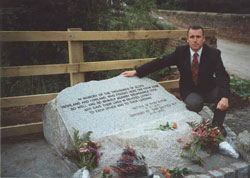
The centre of Worcester, itself, is very historic and well worth a visit.
Photo is Stephen Maggs, instrumental in the fight for the memorial and the memorial itself. http://www.geograph.org.uk/photo/795891
All content on this website is the copyright of CFSSUK ©

